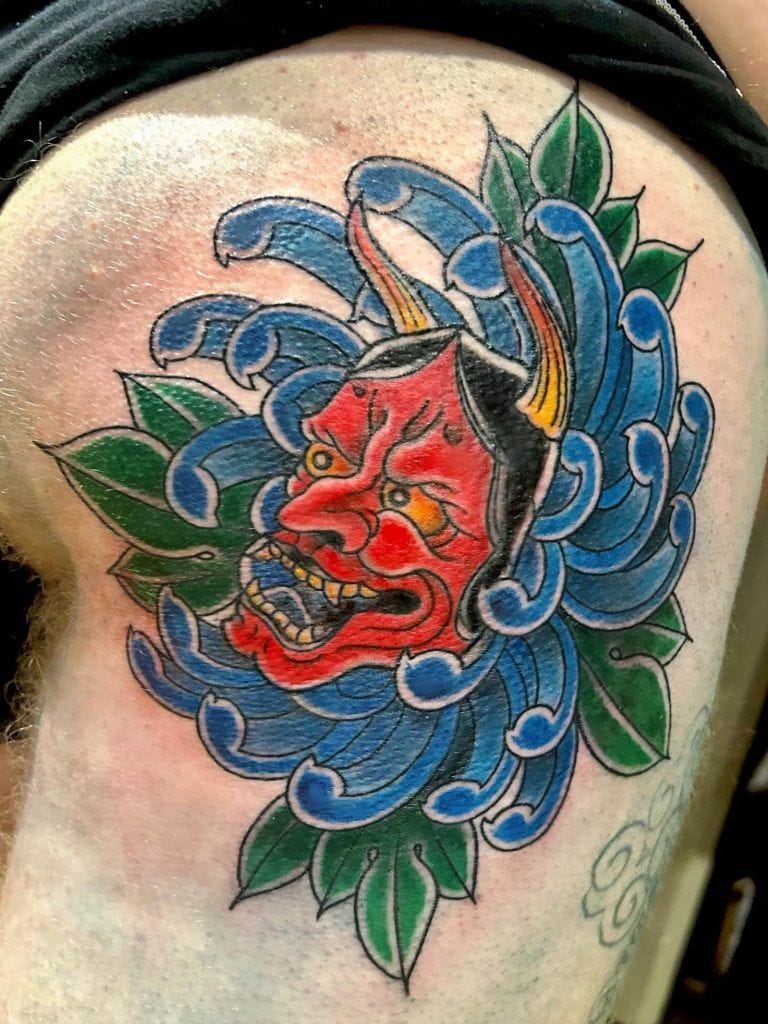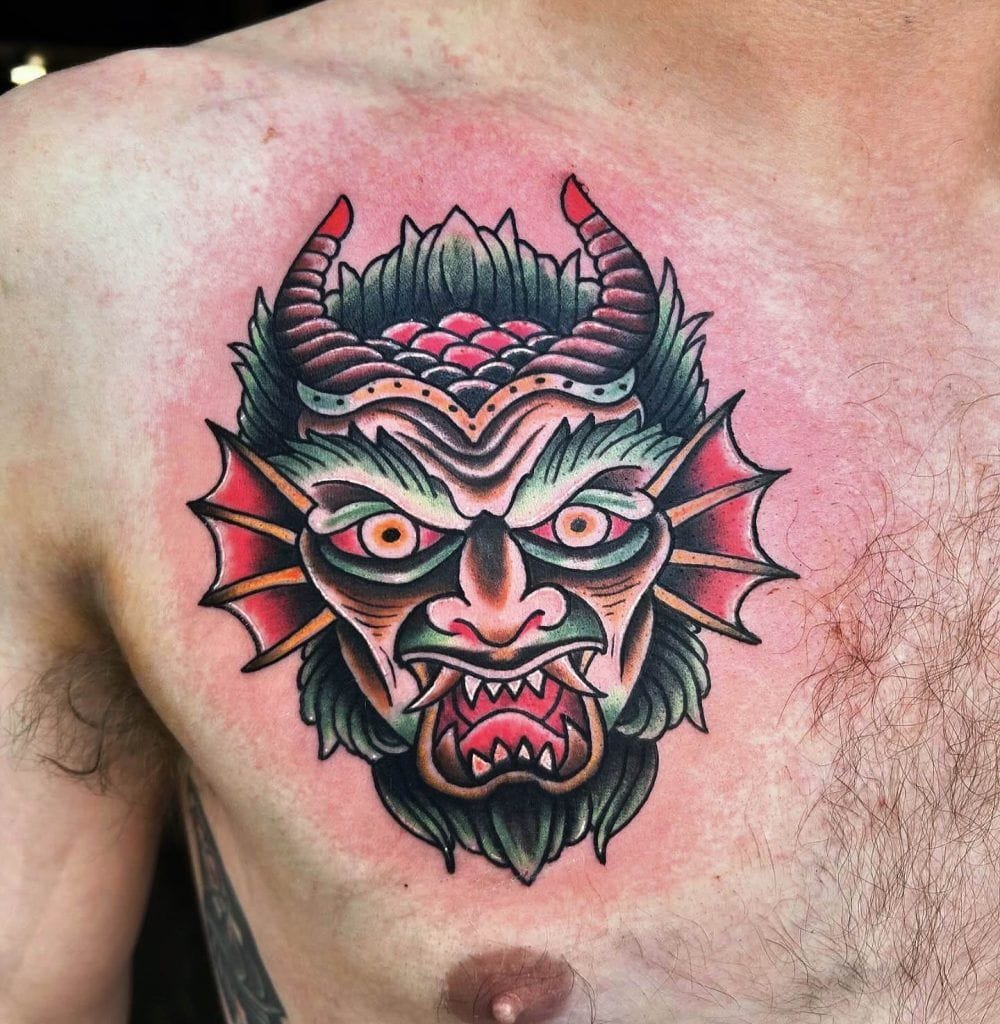In recent years, the world of tattoos has witnessed a remarkable transformation, with anime and manga-inspired designs gaining immense popularity among enthusiasts. This surge can be attributed to the growing global appreciation for Japanese pop culture, which has transcended borders and captivated audiences worldwide. As anime and manga continue to influence various aspects of art and entertainment, it is no surprise that they have found a significant place in the realm of body art.
The vibrant colors, intricate details, and emotional depth of these designs resonate with fans, making them a popular choice for personal expression. The rise of anime and manga-inspired tattoos reflects a broader cultural phenomenon where individuals seek to connect with their favorite characters and stories on a deeper level. These tattoos often serve as a form of homage to beloved series, allowing fans to carry a piece of their passion with them.
As the tattoo community embraces this trend, artists are continually innovating, blending traditional techniques with modern aesthetics to create unique pieces that celebrate the essence of anime and manga. This article will explore the various facets of anime and manga-inspired tattoos, from their roots in traditional Japanese styles to the impact of technology on contemporary designs.
Key Takeaways
- Anime and manga-inspired tattoos have become increasingly popular in recent years, reflecting the global influence of Japanese pop culture.
- Traditional Japanese tattoo styles, such as irezumi and tebori, have heavily influenced the designs and techniques used in anime and manga tattoos.
- Popular anime and manga characters, as well as symbols like cherry blossoms and koi fish, are commonly incorporated into tattoo designs.
- Japanese calligraphy and kanji characters are often used in anime and manga tattoos to add depth and meaning to the design.
- Modern techniques and styles, such as watercolor and minimalism, are being used to create unique and innovative anime and manga tattoos.
Traditional Japanese Tattoo Styles and their Influence on Anime and Manga Tattoos
To understand the allure of anime and manga-inspired tattoos, one must first appreciate the rich history of traditional Japanese tattooing. Known as “irezumi,” these tattoos have been an integral part of Japanese culture for centuries, often depicting mythical creatures, historical figures, and nature scenes. The intricate artistry and symbolism found in traditional tattoos have significantly influenced modern designs, including those inspired by anime and manga.
Artists often draw upon these age-old techniques to infuse their work with depth and meaning, creating a bridge between the past and present. The influence of traditional Japanese tattoo styles is evident in the bold lines, vibrant colors, and dynamic compositions found in many anime-inspired tattoos. Elements such as koi fish, cherry blossoms, and dragons are frequently incorporated into designs, paying homage to the cultural significance of these motifs.
Additionally, the use of negative space and shading techniques common in irezumi can enhance the overall aesthetic of an anime tattoo, allowing for a more immersive visual experience. As artists continue to explore this fusion of styles, they create pieces that not only celebrate contemporary pop culture but also honor the rich heritage of Japanese tattooing.

Popular Anime and Manga Characters and Symbols in Tattoo Designs
Anime and manga are filled with a diverse array of characters and symbols that resonate deeply with fans. From iconic heroes to complex villains, these figures often embody themes of courage, friendship, and perseverance. As such, they have become popular choices for tattoo designs, allowing individuals to express their admiration for specific series or characters.
Notable examples include characters from beloved franchises like “Naruto,” “One Piece,” and “Attack on Titan,” each offering unique visual elements that lend themselves well to tattoo artistry. In addition to characters, symbols from anime and manga also play a significant role in tattoo designs. Emblems such as the Sharingan from “Naruto,” the Straw Hat Jolly Roger from “One Piece,” or the alchemical symbols from “Fullmetal Alchemist” are frequently chosen for their distinctiveness and meaning.
These symbols often carry personal significance for fans, representing values or experiences that resonate with them. By incorporating these elements into their tattoos, individuals create a visual narrative that reflects their connection to the stories and characters they love.
Incorporating Japanese Calligraphy and Kanji Characters in Anime and Manga Tattoos
Another fascinating aspect of anime and manga-inspired tattoos is the incorporation of Japanese calligraphy and kanji characters. These elements add an additional layer of meaning to the designs, allowing fans to express their thoughts or feelings through language. Kanji characters can represent concepts such as love, strength, or perseverance—qualities often embodied by characters in anime and manga.
By integrating these characters into their tattoos, individuals can create a more profound connection to the themes present in their favorite stories. Japanese calligraphy itself is an art form that emphasizes fluidity and expression. When combined with anime-inspired imagery, it can enhance the overall aesthetic of a tattoo while also conveying a message.
Artists skilled in both tattooing and calligraphy can create harmonious designs that blend visual art with linguistic expression. This fusion not only elevates the tattoo’s artistic value but also allows for a more personalized touch, making each piece unique to the individual wearing it.
Modern Techniques and Styles in Anime and Manga Tattoos
As the popularity of anime and manga-inspired tattoos continues to grow, artists are exploring new techniques and styles to push the boundaries of traditional tattooing. One notable trend is the use of watercolor techniques, which mimic the fluidity and vibrancy of anime art. This style allows for softer edges and a more painterly effect, creating tattoos that resemble illustrations rather than conventional body art.
The result is a fresh take on anime-inspired designs that appeals to those seeking something different. Additionally, advancements in tattoo technology have enabled artists to experiment with various tools and methods, resulting in more intricate designs than ever before. The use of digital design software allows artists to plan their work meticulously before applying it to skin, ensuring precision and detail that can capture the essence of anime art.
Furthermore, innovations in ink quality have led to brighter colors and longer-lasting results, enhancing the overall appearance of tattoos inspired by this vibrant genre.
The Fusion of Western and Japanese Tattoo Styles in Anime and Manga Tattoos
The intersection of Western and Japanese tattoo styles has given rise to a unique fusion that reflects the global nature of contemporary tattoo culture. As artists from different backgrounds collaborate or draw inspiration from one another, they create innovative designs that blend elements from both traditions. This fusion is particularly evident in anime-inspired tattoos, where Western artistic influences meet traditional Japanese motifs.
For instance, some artists may incorporate Western comic book styles into their anime designs, resulting in bold outlines and exaggerated features reminiscent of superhero illustrations. Conversely, traditional Japanese elements such as waves or clouds may be integrated into Western-style compositions, creating a harmonious blend that appeals to fans of both cultures. This cross-pollination not only enriches the tattoo landscape but also fosters a sense of community among enthusiasts who appreciate diverse artistic expressions.

The Influence of Technology and Digital Art on Anime and Manga Tattoo Designs
The advent of technology has significantly impacted the world of tattoo artistry, particularly in the realm of anime and manga-inspired designs. Digital art has become an essential tool for many tattoo artists, allowing them to create intricate designs with precision before transferring them onto skin. This process enables artists to experiment with colors, layouts, and styles without the constraints of traditional mediums.
Moreover, social media platforms have played a crucial role in popularizing anime and manga tattoos by providing artists with a global stage to showcase their work. Platforms like Instagram allow tattooists to share their portfolios with a wider audience, attracting clients who are specifically interested in anime-inspired designs. This visibility has led to increased demand for unique interpretations of popular characters and symbols, pushing artists to continually innovate and refine their craft.
The Future of Anime and Manga-Inspired Tattoos
As we look ahead, it is clear that anime and manga-inspired tattoos will continue to evolve alongside the ever-changing landscape of pop culture. The fusion of traditional techniques with modern aesthetics will likely give rise to even more innovative designs that resonate with fans on a personal level. As new series emerge and existing ones gain renewed popularity, artists will find endless inspiration in the stories that captivate audiences around the world.
Furthermore, as technology continues to advance, we can expect even greater possibilities for creativity within the tattoo industry. The integration of digital art will likely lead to more intricate designs that push the boundaries of what is possible on skin. Ultimately, anime and manga-inspired tattoos will remain a vibrant expression of individuality for fans who wish to celebrate their passion for these beloved art forms.
With each new design, artists will contribute to a rich tapestry that honors both tradition and innovation in the world of body art.




